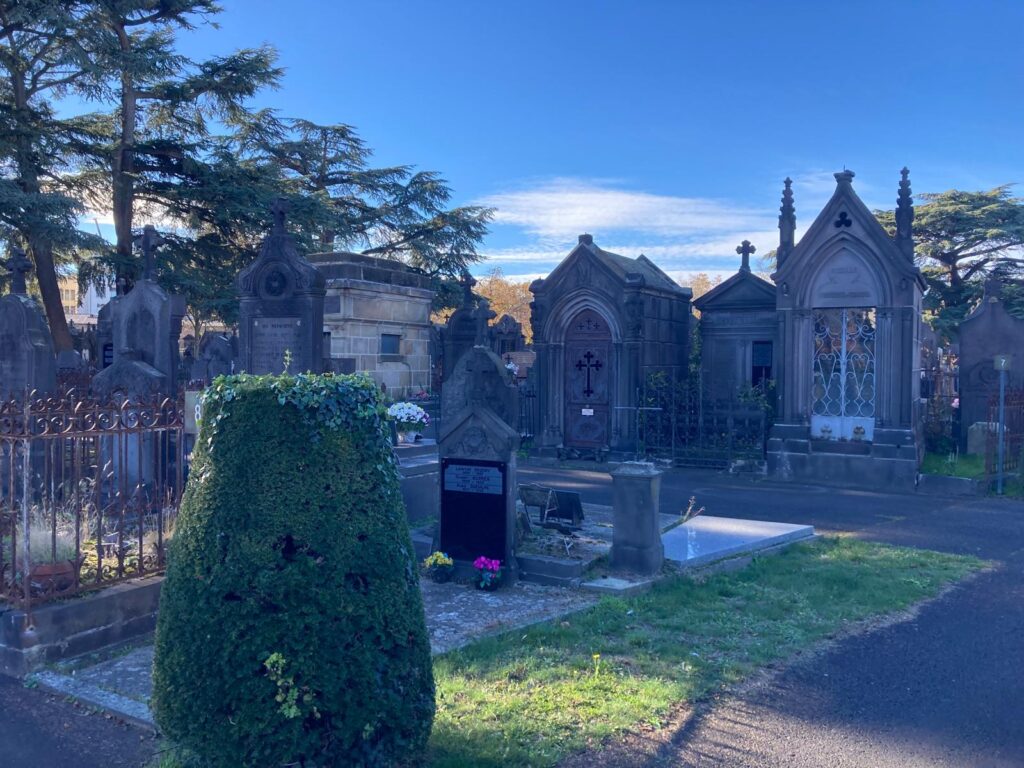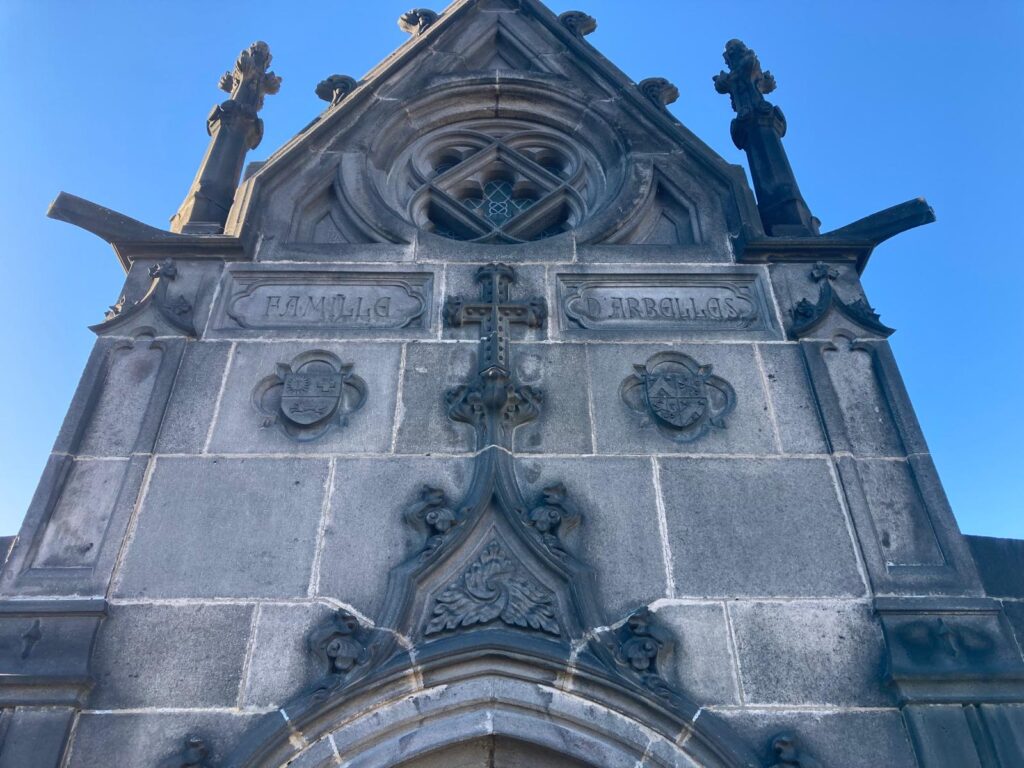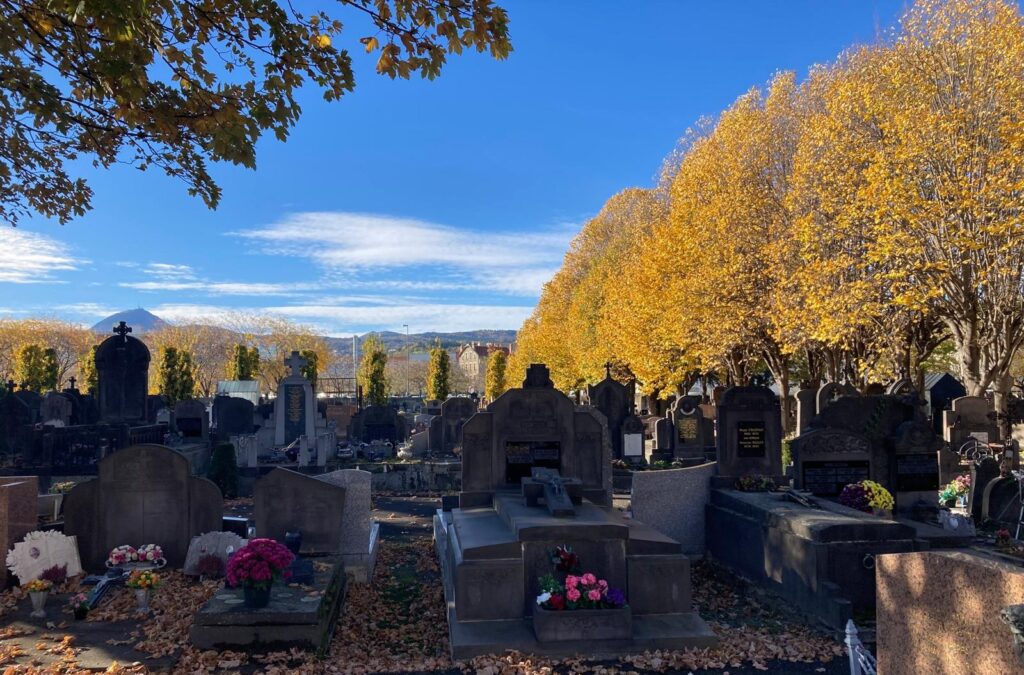While Clermont-Ferrand has many beautiful parks — Montjuzet and Jardin Lecoq for example — those of a more gothic or romantic turn of mind (such as myself) may find more to love in Carmes Cemetery. Often compared to the renowned Père-Lachaise cemetery in Paris, Carmes is officially listed as “one of the most remarkable” cemeteries in Europe.

Comprising eleven hectares of land, the site is generally open to the public throughout the year and features hundreds of towering trees as well as rows and rows of lancet- and stained glass-windowed tombs carved from pierre de Volvic, Clermont’s iconic volcanic stone. Carmes is also the best place in the city to see the Tiretaine — Clermont’s secret, trout-filled river. In October and November, the cemetery effects its annual transfiguration, taking on the autumnal hues of a New England churchyard. Goodly spirits seem to walk among gravestones and fallen branches, their steps like leaves rustled by the wind.



Although Carmes’s modern origins date back to 1816, the cemetery sits on ancient land that was part of the former monastery of Chantoin. At least part of this land, recent archaeological discoveries suggest, once served as necropolis. We know, therefore, that there is far more to Carmes than meets the eye. And as I’ve said previously about Clermont, “the slumbering dead of these ancient streets have tales to tell.” The next time you are walking among its sepulchres and basking in their solemn grandeur, know that Carmes, like Castle Dracula with its many hidden chambers, still has its secrets. Some of its wilder, darker histories have yet to be told.

In the words of the American folklorist Charles G. Leland: “Minor local legends sink more deeply into the soul than greater histories.” To learn more about Clermont-Ferrand’s seemingly endless secrets and ghostlore, sign up for our newsletter below.










